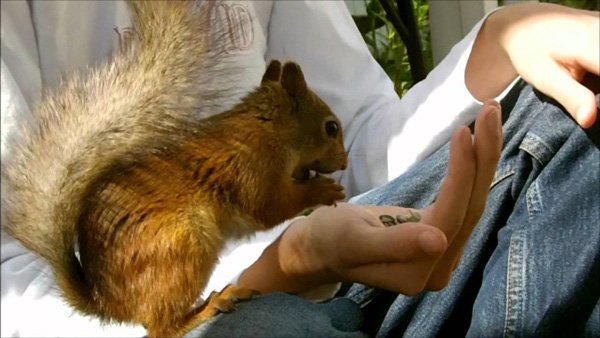

It is often difficult, when cuddling the handful of fluff that you've chosen from its litter, to look upon your kitten and consider that, in only a few months, this tiny being will become sexually mature. Yet, recognising the signs can avoid the birth of unwanted kittens, the prevention of nasty wounds sustained through cat fights, and the avoidance of potentially fatal diseases such as FIV or Leukaemia.
When a female cat is in season or oestrus, she is said to be "in call". Anyone who has lived with a calling cat will understand why the term is so apt, as she will indeed call, normally loudly and incessantly. This is designed to advertise her availability to local roaming males, letting them know that she is ready for mating and is in peak condition to carry young.
The call varies in length anywhere from 3-7 days depending on the cat, and she will continue to cycle until bred. This can be as often as every few days to every few weeks. As well as being unusually vocal, she will roll around on the floor, and often become much more affectionate with her owners. The most obvious sign of a call is when a cat lies on her belly, tucks her back feet under her, lifts her bottom into the air and holds her tail to one side. If she is touched low on the back, her feet will begin to tread in place. This is her way of presenting herself to the male, and no entire male will be able to ignore such an invitation. Cats should only be allowed access to males in this period if you are planning for a litter of kittens. If you do not want to kitten her, now is the time to keep her safely indoors and spay once the call is finished.
Cats can call from an incredibly young age. The earliest anecdotal evidence of a call relates to a 17 week old Siamese kitten, and it is prudent to remember that, once a cat begins to call, she is able to be impregnated. It is also worth noting that cats show no aversion to mating with a sibling, their parent or even their offspring, so in-breeding is a real possibility. It is ill-advised to mate such a young kitten, as the rigours of carrying, birthing and raising a litter should not be underestimated.
The age of onset of calling is very loosely breed-dependent, with Orientals, Siamese and Foreign breeds starting much earlier than most long-hairs, semi-long hairs and British. In contrast to the Siamese above, it is not uncommon for Persians to show no signs of calling until well into their ninth month of life, then taking a further few months to stabilise and reach their peak for mating.
It is recommended to wait until your female has achieved most of her growing prior to expecting her to carry and raise kittens. Normally, this coincides with one year of age, although this is also breed-dependent. Much younger and the breeder risks mismothering or inadequate attention to kittens' needs through immaturity or uncertainty of the mother, much older and the risks of miscarriage and difficult births increase.
If a cat is not intended to have kittens, spaying is strongly recommended. A cat left to call unmated runs the risk of developing Pyometra; a condition where the womb becomes infected and fills with pus. If left untreated, this is fatal.
The risk of mammary cancer in un-spayed females increases by 10% for each year she is left un-spayed. Therefore, the younger the de-sexing is performed, the less the risk of developing cancer.
It is often assumed by the average owner that a male who remains unneutered will be much easier to manage than a female. However, unneutered males can become unhappy, frustrated, aggressive and destructive.
Sexual maturity in males, just as with females, is often determined by breed. A 16 week old Oriental kitten managed to successfully sire a litter with a fully mature female, while Himalayans commonly do not sire until at least two years old, sometimes older.
Often, the first signs of sexual maturity are very subtle. Your kitten may change his play from gentle rough housing or kittenish clowning to more focused hunting and stalking strategies. He will begin to take an interest in sniffing other cats' bottoms, as this is how he will ultimately discern if a female is ready to mate. He may scruff other cats, i.e. bite the back of their necks and hold on, again a behaviour he would engage in to hold the female still for mating.
Seen in random play, these behaviours often go unnoticed until the male begins to outright mount other animals or even humans in the household. One of the most obvious signs that a male is maturing is when he begins to spray. He will hold his tail straight up in the air, quiver it quickly from side to side, then emit spurts of very pungent smelling urine. He will often choose vertical surfaces to do this. The smell is incredibly strong, and the behaviour cannot be discouraged.
Just as the female calls to attract a mate, the male advertises his availability through his urine. not only does it allow the female to locate him, but it warns other males away, proclaiming his virility and laying claim to his territory, whether that be a house or outdoors. For some unknown reason, electrical items and sockets appear to be favoured urination spots, so it isn't uncommon for a male to short out the power to a house.
If a male remains unneutered, he will roam for up to 6 miles searching for mates. He will regularly fight with other males for mating rights, and, as a result, run the risk of illness and injury. Mating fights are vicious, and cats often need vet treatment to manage the wounds they sustain. FIV, the cat equivalent of human AIDS, can be passed in these fights, as can feline Leukaemia and a host of other diseases.
Disease can also be contracted from the females he mates with, and although the owner will not have the expense of kittens to contend with, the vet bills incurred by the frequent fighting will more than balance this outlay.
If a cat is not for breeding, then spaying and neutering are strongly recommended. This avoids the birth of potentially difficult to home kittens, and drastically decreases the risk of your cat, male or female, getting involved in fights or contracting a disease from copulation. Many charities will provide financial support for spaying, designed to assist those with low incomes.
 Is The Presa Canario Dog A Good Choice Of Pet?
Is The Presa Cana
Is The Presa Canario Dog A Good Choice Of Pet?
Is The Presa Cana
 Ten Important Tips That All Primary School-aged Children Should Know About Dogs
Ten Important Tip
Ten Important Tips That All Primary School-aged Children Should Know About Dogs
Ten Important Tip
 All About The St. Bernard Dog
All About The St.
All About The St. Bernard Dog
All About The St.
 Why Do Dogs Get The Shakes ?
Why Do Dogs Get T
Why Do Dogs Get The Shakes ?
Why Do Dogs Get T
 Take Good Care of Your Furry Friends with Dog Grooming Lymm
Take Good Care of Your Furry Friends with Dog Grooming Lym
Take Good Care of Your Furry Friends with Dog Grooming Lymm
Take Good Care of Your Furry Friends with Dog Grooming Lym
Copyright © 2005-2016 Pet Information All Rights Reserved
Contact us: www162date@outlook.com